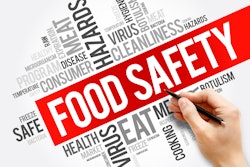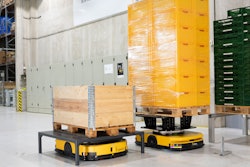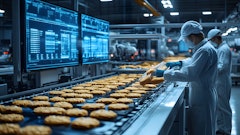
When it comes to food safety, maintaining the integrity of products is essential. In an uncontrolled environment, with fluctuating temperatures and improper solutions, food quality can deteriorate quickly. It’s imperative for food shippers to have access to transportation and warehouse services that not only maintain the quality of food products, but also include comprehensive reporting for temperature-changes, real-time tracking, and inventory management. Additionally, understanding how to navigate market fluctuations, which may cause hurdles to accessing shipping capacity, and risk factors of food safety are both important aspects of food logistics that help inform how quality can be impaired.
Dealing with limited capacity can cause stress to producers who need to transport and store food while maintaining freshness. Having access is one thing, but recognizing risk factors that come with contamination is an important consideration for contingency planning when capacity becomes an issue. While some causes of contamination are obvious, others are more subtle. According to the U.S. Food and Drug Administration (FDA), the following can be risks for physical, biological, and chemical contamination:
· Improper temperature control of products and management of transportation units
· Improper packing, loading, and unloading
· Poor pest control
· Lack of employee training and management knowledge of food safety and security
· Poor transportation unit design, construction, and preventative maintenance
· Poor employee hygiene
· Improper handling or management of products intended for disposal
· Improper holding practices for products awaiting shipment or inspection
Shippers should leverage tools to maintain food safety throughout every stage of the shipment lifecycle.
Here are a few primary services to understand and leverage for optimal food transportation and storage.
Temperature-controlled shipping
Temperature-controlled shipping is an essential tool for goods which require specific ranges to maintain quality and safety. The need for reliable temperature-controlled shipping has been increasing in recent years, and transporting certain products without temperature-controlled technology creates the possibility of financial loss and health risks, should these products become compromised. Reefer trucks and refrigeration systems help maintain temperature-controlled environments, as well as packing aids such as thermal blankets, gel packs, and coolers.
Year-round temperature-controlled shipping can handle goods between 50-65°F for optimal quality. It’s worthwhile to find facilities that are food-grade and FDA certified to preserve product integrity.
Refrigerated consolidation
One way of streamlining efficiency is to utilize a consolidated shipping solution. Here’s how it works: smaller shipments bound for the same destination are simply combined into one full load. This eliminates extra stops and time lost switching between containers because your freight stays on the same trailer throughout transit. This solution increases efficiency and sustainability by lowering costs through time and fuel conservation.
Refrigerated consolidation is no different than other consolidated options, except that it prioritizes the quality maintenance of perishable products. This means that you can access a mode that offers lowered costs and claims potential, faster transit, and an eco-friendly alternative to traditional temperature-controlled LTL shipping.
Refrigerated consolidation solutions can move chilled products at 34°F, keeping the perfect temperature throughout every stage of shipping. 3PLs with relationships with big box retailers can ship to major freight areas quickly and efficiently.
Warehousing and warehouse services
Storing food products also requires unique technical services. From maintaining the quality of goods to ensuring inventory is properly monitored to prevent the loss of products while they’re still on the shelves, utilizing technology for warehousing and warehouse services goes a long way. Temperature-controlled facilities often utilize high-tech equipment to receive, store, pack, and distribute perishables, keeping the process efficient and lowering storage and handling costs.
Understanding the requirements of these transportation services also provides a basis for understanding the needs of different products. Basic practices may not apply to every food product and knowing how to differentiate is crucial to preventing spoilage. Implementing technology enabled tools such as temperature-monitoring devices on transportation units enables the tracking of fluctuations in real-time and following procedures such as precooling containers prior to loading helps create a strong foundation for maintaining the integrity of each shipment.
As we progress from spring to summer, the seasons bring warmer temperatures. While seasonal products such as produce are harvested from southern climates, bringing these goods to market while they’re still fresh is an essential part of logistics. Production increases in these regions as growers begin to harvest, and securing freight in major hubs becomes competitive. This competition causes tightness when it comes to capacity, making life difficult for shippers. As a result, the ripple effect from these various conditions influences rates in other areas of the country as well.
Mitigating supply chain tightness during busy times such as produce season begins with staying prepared. Before the season begins in earnest, having a plan is key, and as the market fluctuates due to varying demand, it’s important to maintain flexibility and have contingency plans for multiple scenarios. In addition to working with trusted carriers and exploring alternative shipping modes, adjusting your lead time for trailer procurement, including flexible delivery dates, and relying on the support of a broker can help with navigating limited capacity.
Particularly during holidays and other busy times of the year, having a trusted partner to manage your freight needs enables you to focus on business. Mastering food safety comes with experience and the support of experts and specifically targeted technology. Using specialized carriers helps mitigate risks and achieve greater success in food product transportation. Reach out to a leading provider to start a conversation and learn more about food safety.


















